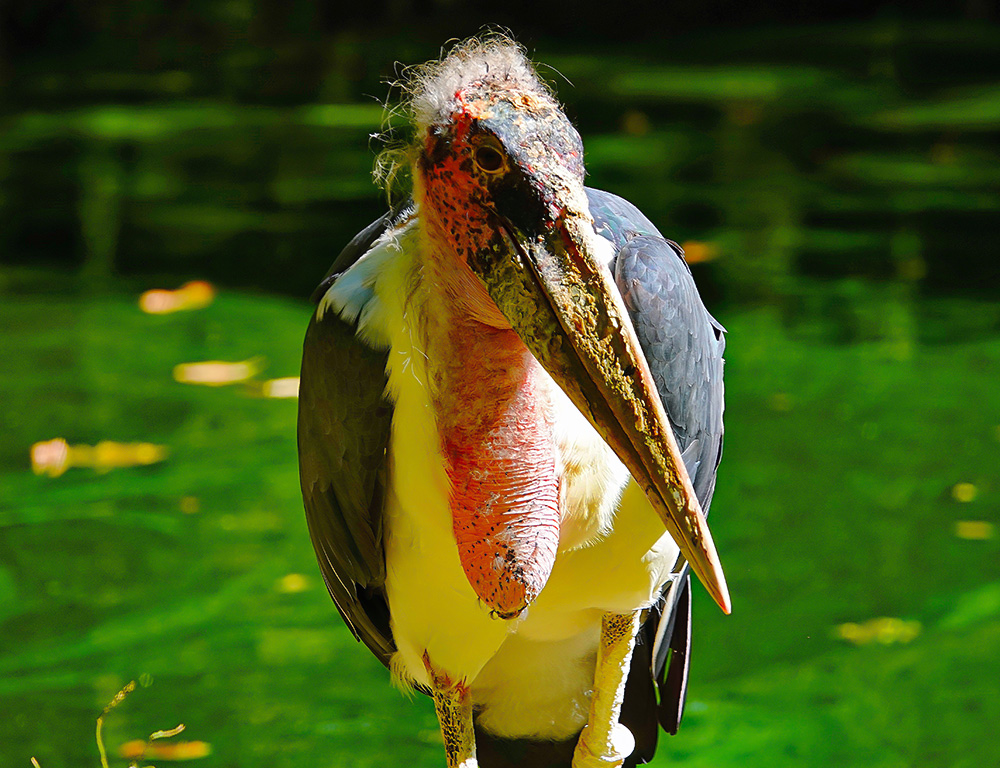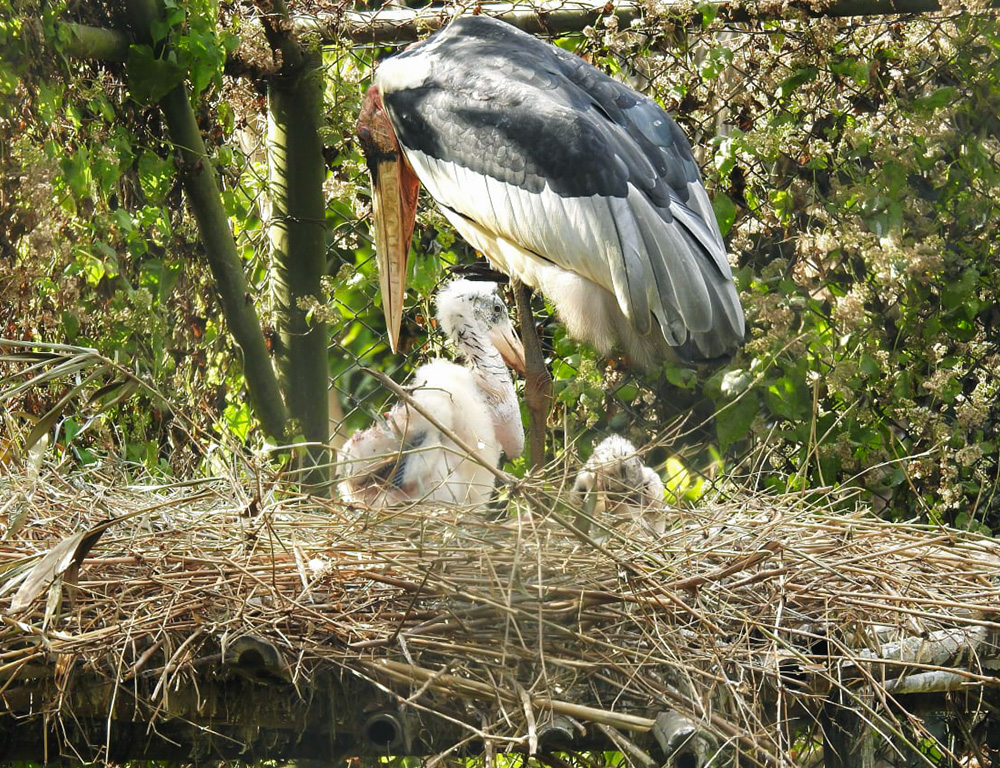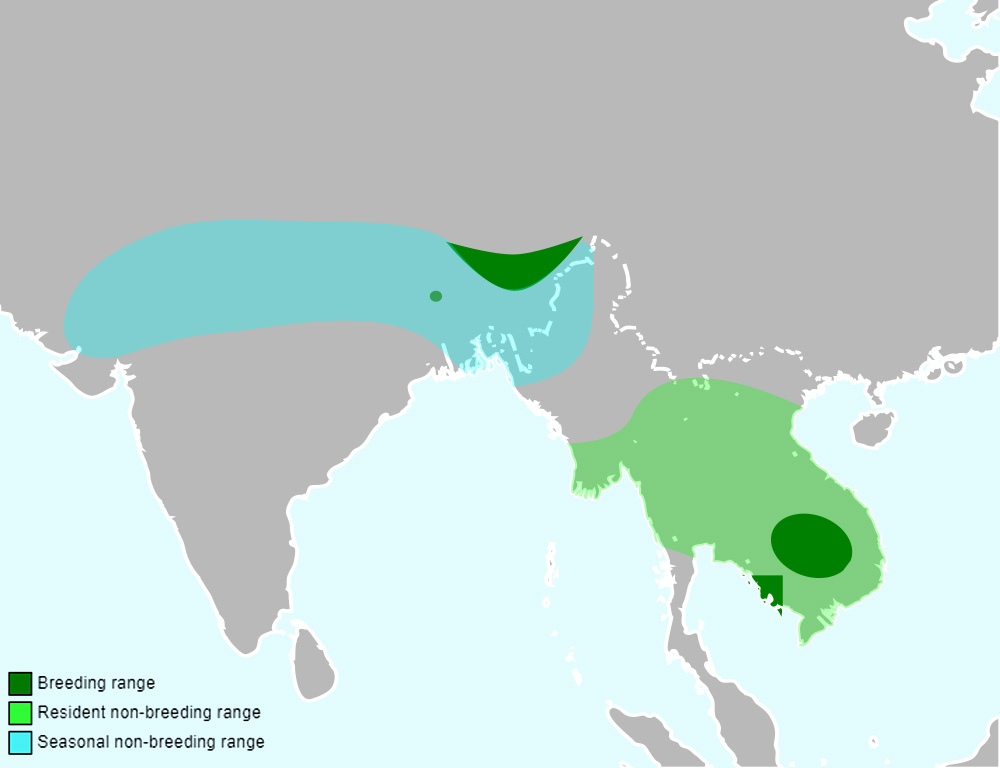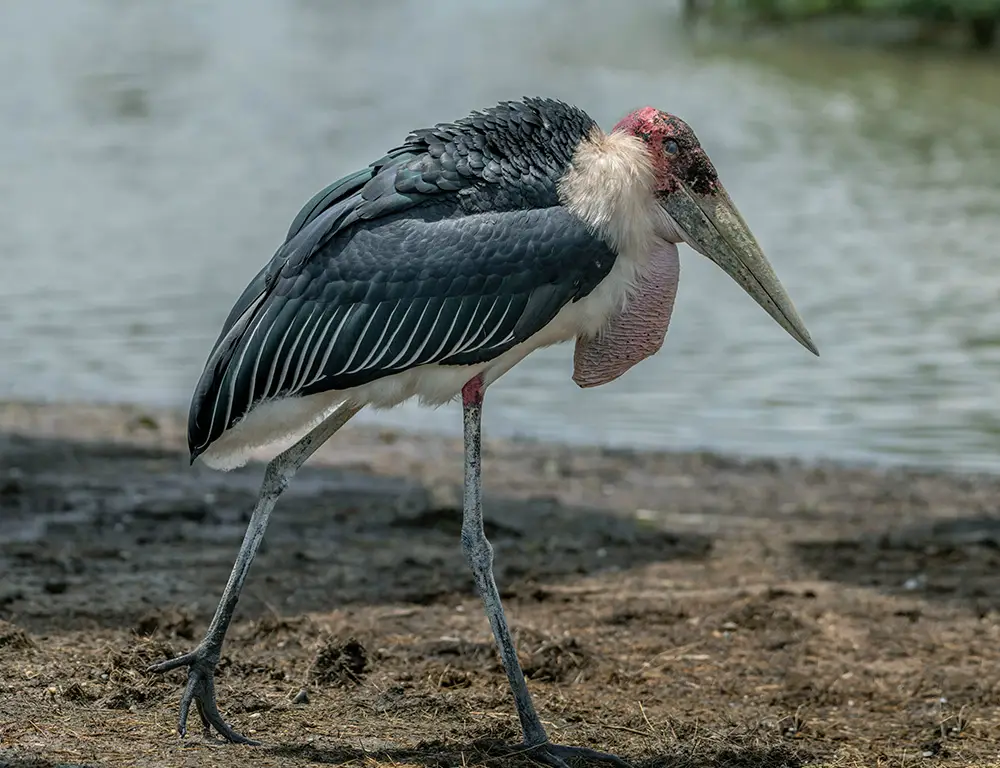The Greater Adjutant (Leptoptilos dubius) is a magnificent and imposing stork species found in South and Southeast Asian wetlands.
Known for its large size, distinctive appearance, and scavenging behavior, this bird is crucial in maintaining ecosystem balance.
Despite its ecological significance, the Greater Adjutant faces numerous threats, including habitat loss, pollution, and hunting.
Conservation efforts are underway to protect its remaining populations and habitats, highlighting the importance of understanding and preserving this remarkable species.

Common Characteristics Of Greater Adjutant
The Greater Adjutant (Leptoptilos dubius) is a remarkable stork species with several common characteristics defining its biology, behavior, and human interactions.
Found primarily in South and Southeast Asia, these majestic birds exhibit unique traits that make them both fascinating and vital components of their ecosystems.
Physical Characteristics
Here are some interesting Physical Characteristics of Greater Adjutant:
Large Size
One of the Greater Adjutant’s most striking features is its impressive size. With a height of up to 150 centimeters and a wingspan of over 250 centimeters, it is one of the largest stork species globally.
Bald Head and Neck
The Greater Adjutant is characterized by its bare, wrinkled head and neck, devoid of feathers. This baldness is an adaptation to its scavenging lifestyle, reducing the risk of contamination from carrion and other food sources.
Long, Heavy Bill
These storks possess a long, thick bill, which they use to tear apart carrion and other food items. The bill is robust and slightly curved, enabling efficient feeding on various prey.
Pouch-like Throat
A notable physical feature of the Greater Adjutant is its distinctive pouch-like throat, which expands when feeding. This throat sac aids in swallowing large food items and is a storage space during foraging.
Dark Plumage
The plumage of the Greater Adjutant is predominantly dark, with shades of black, gray, and brown. This coloration provides camouflage in their natural habitat, allowing them to blend in with their surroundings.
Long Legs
Greater Adjutants have long, slender legs adapted for wading through shallow water and navigating their marshland habitats. These legs provide stability and support while foraging and walking on uneven terrain.
Unique Wing Pattern

In flight, the Greater Adjutant displays a unique wing pattern characterized by broad wings with black flight feathers and contrasting white underwings. This pattern is distinctive and aids in identifying the species from a distance.
Distribution And Habitat
Greater Adjutants are primarily found in wetland habitats such as marshes, swamps, and riverbanks. They have a relatively restricted distribution, with populations in parts of India, Bangladesh, Cambodia, and Nepal.
Behaviour And Ecology
These storks are predominantly scavengers, feeding on carrion, fish, amphibians, and small mammals. They are also known to opportunistically prey on insects and other invertebrates in their habitat.
Voice
The Greater Adjutant is relatively silent outside of the breeding season. During courtship and nesting, they may produce low grunting or croaking sounds to communicate with their mates and offspring.
Relationship To Humans
Historically, Greater Adjutants have faced persecution and habitat loss due to human activities such as hunting and deforestation. However, conservation efforts are underway to protect their dwindling populations and restore their habitats.
Taxonomy
Here’s a table outlining the taxonomy of the Greater Adjutant (Leptoptilos dubius):
| Taxonomy Level | Classification |
| Kingdom | Animalia |
| Phylum | Chordata |
| Class | Aves |
| Order | Ciconiiformes |
| Family | Ciconiidae |
| Genus | Leptoptilos |
| Species | L. dubius |
This table provides the Greater Adjutant’s hierarchical classification, ranging from its broader taxonomic categories, such as Kingdom and Phylum, to its specific species within the genus Leptoptilos.
Nesting Habit

Here’s a table outlining the nesting habits of Greater Adjutants:
| Nesting Habit Feature | Description |
| Nesting Sites | Greater Adjutants typically nest in trees or tall structures, often in large colonies near wetland habitats. |
| Nest Construction | They build large stick nests, often in the upper branches of trees or on man-made structures such as buildings or poles. |
| Nesting Behavior | Breeding pairs engage in elaborate courtship displays and nest-building activities, with both parents sharing duties. |
| Nesting Material | The nests are constructed using sticks, branches, and other plant materials, forming a sturdy platform or bowl-shaped structure. |
| Egg Laying | After the nest is built, females lay a clutch of 1-3 eggs, which both parents incubate for 30-40 days. |
| Chick Rearing | Both parents care for the chicks, feeding them regurgitated food and protecting them from predators until they fledge. |
| Nest Defense | Greater Adjutants use vocalizations and physical displays to defend their nesting sites from intruders, including other birds and humans. |
This table provides an overview of the nesting habits and behaviors of Greater Adjutants, highlighting key features such as nesting sites, construction, egg laying, and chick rearing.
Threats
The primary threats to Greater Adjutants include habitat destruction, pollution of wetlands, and hunting for feathers and body parts used in traditional medicine.
These threats have led to population declines and fragmentation of their remaining habitats.
Distribution
Greater Adjutants have a patchy distribution, with populations occurring in fragmented wetland habitats. Efforts to conserve and restore these habitats are essential for the species’ long-term survival.
Breeding
Breeding typically occurs during the dry season when water levels are low, allowing for easy access to prey. Greater Adjutants build large stick nests in trees or on man-made structures, where they raise their chicks.
Feeding
These storks are opportunistic feeders, scavenging for carrion and foraging for fish, amphibians, and small mammals in their wetland habitats. They play a crucial role in cleaning up carcasses and controlling pest populations.
Parasites, Diseases, And Mortality
Greater Adjutants may be susceptible to various parasites and diseases, including avian influenza and bacterial infections. Mortality rates may increase due to habitat degradation and human disturbances.
Status And Conservation
The Greater Adjutant is listed as Endangered on the IUCN Red List due to habitat loss and degradation. Conservation efforts focus on habitat protection, community engagement, and raising awareness about the importance of these storks in wetland ecosystems.
In Culture
Greater Adjutants are revered as symbols of good luck and prosperity in some cultures. They may also feature in folklore and traditional stories as guardians of wetlands and harbingers of rain. Efforts to conserve these birds are often intertwined with cultural values and beliefs.
Ranging Map

The ranging map of the Greater Adjutant (Leptoptilos dubius) depicts its distribution across South and Southeast Asia, primarily in countries like India, Bangladesh, Cambodia, and Nepal.
Within these regions, Greater Adjutants are typically found in wetland habitats such as marshes, swamps, and riverbanks, where they forage for food and breed.
In India, Greater Adjutants are mainly concentrated in the northeastern states of Assam and Bihar, with smaller populations in West Bengal and Uttar Pradesh.
They are particularly associated with the Brahmaputra and Ganga river basins, where suitable wetland habitats support their presence.
The species is primarily found in Bangladesh’s northeastern and central parts, including wetlands around Dhaka and Sylhet. It is also known to inhabit areas near the Brahmaputra and Meghna river systems.
In Cambodia, Greater Adjutants are mainly restricted to the northern and eastern regions, particularly around the Tonle Sap Lake and the Mekong River basin. Here, they inhabit freshwater marshes, flooded forests, and agricultural fields.
In Nepal, the species is rare and localized, with sightings reported in wetland areas such as the Koshi Tappu Wildlife Reserve and the Chitwan National Park. Their presence in Nepal is limited compared to other countries within their range.
Overall, the Greater Adjutant’s ranging map reflects its dependence on wetland habitats and its distribution within the broader landscape of South and Southeast Asia.
7 Interesting Facts About Greater Adjutant

Let’s discuss interesting Facts About Greater Adjutan:
1. Imposing Size
The Greater Adjutant is one of the largest stork species globally, standing up to 150 centimeters tall and exceeding 250 centimeters in wingspan. Its size and distinctive appearance make it an impressive sight in its wetland habitats.
2. Bald Head And Neck
Unlike many other storks, the Greater Adjutant has a bald head and neck devoid of feathers. This adaptation helps prevent contamination while scavenging carrion and other food sources in its habitat.
3. Scavenging Behavior
Greater Adjutants are primarily scavengers, feeding on carrion, fish, amphibians, and small mammals. They are crucial in cleaning up carcasses and maintaining ecosystem balance in wetland habitats.
4. Colonial Nesters
Greater Adjutants gather in large colonies during the breeding season to build their nests. These nesting colonies can comprise hundreds of pairs, creating bustling communities during the breeding season.
5. Conservation Status
Despite once being widespread, Greater Adjutant populations have declined significantly due to habitat loss and hunting. They are now listed as Endangered on the IUCN Red List, with conservation efforts underway to protect their remaining populations and habitats.
6. Cultural Significance
Greater Adjutants are revered as symbols of good luck and prosperity in some cultures. They may also feature in local folklore and traditions as guardians of wetlands and harbingers of rain.
7. Unique Vocalizations
Greater Adjutants are relatively silent birds outside of the breeding season. However, during courtship and nesting, they may produce low grunting or croaking sounds to communicate with their mates and offspring.
Conclusion
The Greater Adjutant symbolizes resilience and adaptability in the face of habitat degradation and human pressures.
While facing significant conservation challenges, this majestic stork species continues to inspire efforts to safeguard its future.
By raising awareness, implementing conservation measures, and fostering community engagement, we can ensure the long-term survival of the Greater Adjutant and preserve its place in the rich tapestry of Asian wetland ecosystems.